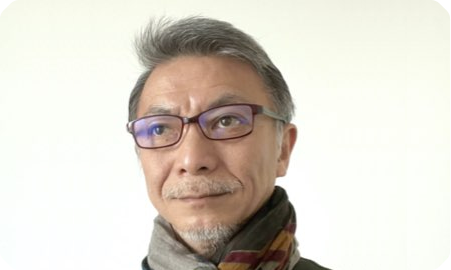
COLUMN
Search by keyword
- All
- Ryotei & Restaurants
- Lodging/Hotels
- Producers
- Technology
- DX (Digital) & SNS
- City Planning
- Utilization
- Gastronomy and Culinary
- Japanese Nature
- Japanese history and traditional culture
- Japanese Food Culture
- Agriculture
- Fisheries
- SDGs
- Local production for local consumption
- Foreigner Activation
- Experience
- Overseas Expansion
- Fermentation
- Public-private partnerships and collaborations
- Sake
- Community Revitalization
- Spirituality
- Japan of the Sea
- Mountain Japan
VIEW ALL
-
Read more

5 Well-being Social Design Inspired by Food
In Japan, 2021 was the so-called the first year of well-being. Because, well-being was positioned as an important part of the government’s Basic Policy on Economic and Fiscal Management and Reform and its growth strategies. In this Basic Policy, it is clearly stated that “well-being KPIs should be established in the government’s various basic plans.” In response, well-being KPIs were established in a total of 32 basic plans put together by governmental organizations such as the Cabinet Secretariat, MEXT, MHLW, MAFF, MLIT, MOE, Cabinet Office, and CAA. These developments are expected to be accelerated further from fiscal 2022 onwards. One of the many definitions of well-being is “a positive feeling or state among individuals or communities.” This is not a fixed definition, but rather a concept that can change dynamically across different generations and cultures. Needless to say, as a such an ambiguous concept, there are diverse interpretations as to what constitutes well-being and what leads to well-being. As such, scholars have long since given up on efforts to define a fixed shape for well-being. How are scholars tackling the topic? Rather than focusing on a shape, they are looking at the factors that lead to well-being. And so, leaving what constitutes well-being to the targets of their investigations, scholars have been researching what factors influence their targets’ ideas of well-being through various surveys for more than half a century. These investigations have led to some interesting discoveries. That is, while the shape of well-being differs from person to person, there are many similarities in the factors that influence their well-being. One easy-to-relate to factor is income.For many people, a certain level of income is a key factor behind their well-being. The way that this income is used to achieve well-being, and what shape this well-being takes, varies by person.Another factor is social tolerance. This shows that, regardless of generation or culture, a society in which there is no categorization or discrimination is an important factor for many people’s well-being. As a one of the researchers of well-being myself, I regularly examine what factors play an important role in people’s well-being. One factor I have discovered is the gender gap in cooking frequency. Specifically, when looking at society overall, the narrower the gender gap in cooking frequency, the higher the level of well-being. In almost all societies, women cook more frequently than men. In other words, societies in which men […]
-
Read more

4 Teachings for the Future from Shojin Ryori
There is an old children’s song that has been passed down in Sakamoto at the foothills of Mt. Hiei, where the old satobo residences of former monks can be found. The song is about the food consumed by Buddhist monks. The Buddhist monk Saicho, who founded the Tendai sect of Buddhism on Mt. Hiei, brought tea and tofu skin to Japan from China. The children’s song mentions a Buddhist meal of broiled tofu skin and takuan pickles, the latter of which is thought to have first been made by Ryogen, the 18th head priest of the Tendai sect who lived during the Heian period. As can be seen from this song, meat and fish are not consumed on Mt. Hiei, which has for many years been a location for ascetic training. Instead, priests on the mountain consume shojin ryori, a vegetarian Buddhist cuisine. Shojin ryori does not use any animal proteins from meat, fish, or eggs, nor does it use any pungent vegetables such as spring onion, onion, or garlic chives. The dashi used in shojin ryori is made from kombu seaweed or dried shiitake mushrooms. Shojin ryori places thorough importance on the balance between sourness, bitterness, sweetness, spiciness, and saltiness, and the idea is to enjoy the natural taste of the ingredients. Further, before and after every meal, it is custom for Buddhist priests to recite a prayer called the Saijikigi, a tradition that has continued for many years. The pre-meal prayer can be roughly translated as follows: “We are fortunate to receive this food thanks to the divine protection of Buddha and the blessings of living things. We shall respect the origins of the ingredients and appreciate the differing strengths and weaknesses of flavor. We will give thanks for these blessings and the variety of ingredients we consume.” After meals, too, we recite a prayer to give thanks for the life we have consumed to support our own. These prayers have been translated into modern Japanese from the Kanjin jikiho produced by Tendai Daishi, who is revered as the founder of the Tiantai school of Buddhism. Although we tend to consume delicious ingredients without much thought,but we are consuming life in fact. The Saijikigi is an expression of thanks for all living things. Behind this idea is the Buddhist belief that Buddha exists in all things, be it mountains, rivers, trees, or grass. At Enryaku-ji Temple on Mt. […]
-
Read more

3 Japan’s Coexistence with Nature and Expectations for the Future of Food Culture in Society
The Ise Jingu Shrine hosts approximately 1,500 festivals and rituals each year, but perhaps the most important one is the Kannamesai festival, which is a symbol of Japan’s rice culture. Among these annual festivals, the Shikinen Sengu ritual is said to be the shrine’s most solemn ceremony, that the shrine’s deity (the sun goddess Amaterasu) is transferred to a new shrine building every twenty years. This In the Man’yoshu book of poems and other classical texts, the Ise Jingu Shrine is so called as Kamukaze no Ise, or Ise of divine winds. “Divine winds” brings to mind a gentle climate, natural features, and sufficient amount of rain for abundant harvests. I believe it is the ideal representation of Ise. Moreover, according to the Nihon Shoki, or Chronicles of Japan, during the reign of Emperor Suinin, Amaterasu said to Yamatohime-no-mikoto, “This Ise of divine winds is a province where the waves of heaven continuously reach the shore.” Amaterasu is a symbol of the sun, and her words imply the sun, the wind and the waves nurtured the nature of Ise, and show how the sacred city exists as one with nature. Food, clothing, and shelter are essential for humans These three elements are also an essential part of the Shikinen Sengu, which was first conducted around 1,300 years ago. Here I would like to focus on the food that have been offered forshrine deities throughout the shrine’s long history. Today, global environmental consideration are growing and the increase in greenhouse gas emissions and the disposal of leftover food are frequently broadcasted on news. I believe that the food culture at Ise Jingu Shrine could contribute to the future of global society. According to a record from 804 (Enryaku 23) of the ceremonies held at the Kotai Jingu Shrine, which is the inner shrine at Ise, at the Tsukinamisai festival held on June 15, local peasants from Shima province offered abalone and turban shells to the deities. Meanwhile, in chapter 4 of the Engishiki (Procedures of the Engi Era; completed 927 (Engi 5)) , which is about ceremonies at the Ise Jingu Shrine, offerings at three important shrine festivals were said to be dried foods, sea slugs, skipjack tuna, seaweed, salt, and oil. In the medieval text Jinposho—a list of districts within the Ise Jingu Shrine —we can see that, including from 14 districts in Ise province, the inner and outer shrines […]
-
Read more

2 Qualitative Global Changes and Expectations for Japan
Securing energy resources is paramount for our livelihoods. Until Russia’s invasion of Ukraine hit the headlines in 2022, decarbonization and the SDGs were the main topics in the UK, which hosted COP26 in the autumn of 2021, and in other environmentally advanced European countries. With it now compulsory for companies to disclose their environmental information, systems are in place to limit funding in industries that have negative environmental impacts and in companies with negative, passive approaches to environmental measures. Carbon neutrality, meanwhile, has been positioned as an achievable target through enormous funding and technological development, which to be prepared mainly in advanced nations. Elsewhere, through Russia’s invasion of Ukraine, the distressing dependence of European countries on Russian energy has become increasingly apparent. Since the beginning of life, securing energy resources has been the most important task for humanity in every age. Behind the scenes, however, there has been a qualitative change in values that can be viewed as a countercurrent in time. Changes in the Monetary Value There are some who believe that the monetary value is decreasing, while others believe that the more money they have, the happier they will be. Let us use real estate as an example. New-build condominiums in the city center are often sold out on the spot. Chances of purchasing the most popular homes are less than a hundred-to-one, while the prices of these condominiums have increased by approximately 50% over the past decade. Let us now compare the value that can be obtained from a residence that cost 40 million yen ten years ago with that costs 60 million yen today. Functional value, such as convenience and safety, and emotional value, like views from the windows and local atmosphere, remain almost completely unchanged. Even if you pay 50% more, you do not get 50% more value. There are two things we can learn from this example. The first is that the soaring prices caused by the recent excess liquidity have not increased the value of an object, but rather lowered the monetary value. The second is that there is a limit to measure value in terms of monetary value. Changes in Society Next let us look at changes in social trends except for monetary value. I have intentionally created a list of the trends with two extremes. From measures of the whole to measures of the individual From individual ownership to collective ownership […]
-
Read more

1 The Future of the UNWTO’s Gastronomy Tourism Initiatives
According to a survey by the World Tourism Organization (UNWTO), in recent years, the number of tourists who prioritize experiencing the regional lifestyles and cultures of their destination by enjoying the local cuisine is increasing at around the same rate as those who visit tourist hotspots. These tourists have a strong desire for authenticity and tend to consume more than the average tourists. Gastronomy tourism is defined as “A form of tourism that aims to experience the local culinary culture and to enjoy food nurtured by the ingredients, culture, customs, traditions and history created by the local climate.” In today’s post-COVID-19 society, overtourism and other tourism issues prior to the pandemic have made initiatives for the SDGs more important, while awareness of the importance of sustainable tourism—in terms of the economy, society, culture and environment—is gradually increasing. Gastronomy tourism is closely linked to the local natural environment, agriculture and culture. Further, gastronomy tourism, which anyone can participate and which contribute to participants’ health and happiness, can be considered an effective way for achieving sustainable tourism. Moreover, the origins of many types of cuisine can be found in the local history and culture. Food is therefore an ideal contents to highlight a region’s characteristics, and can be one of the great pleasures of travel. In a survey conducted by the Japan Tourism Agency, the primary attraction for foreign tourists visiting Japan was “eating Japanese food”, while in sixth place was “drinking Japanese sake”. As a result of the above, local governments around Japan are proactively engaging in gastronomy tourism initiatives to achieve regionaldevelopment. The UNWTO lists the following five reasons for the focus on gastronomy tourism: (1) It is an effective way for regions to differentiate themselves; (2) it can provide visitors new values and experiences; (3) it can be initiated even in regions with few tourism resources; (4) it is conducive to tell regional stories; and (5) it promotes tourists to revisit. Below are three initiatives led by the UNWTO for gastronomy tourism. The first is a report that the UNWTO published in 2019 called Gastronomy Tourism – The Case of Japan. This report features 18 excellent examples of gastronomy tourism activities in Japan. The report follows a survey of Japan’s 1,741 municipalities, of which 584 responded. It shows that gastronomy tourism activities in Japan are more comprehensively focused on sustainable regional development and collaboration with agriculture than tourism promotion […]

